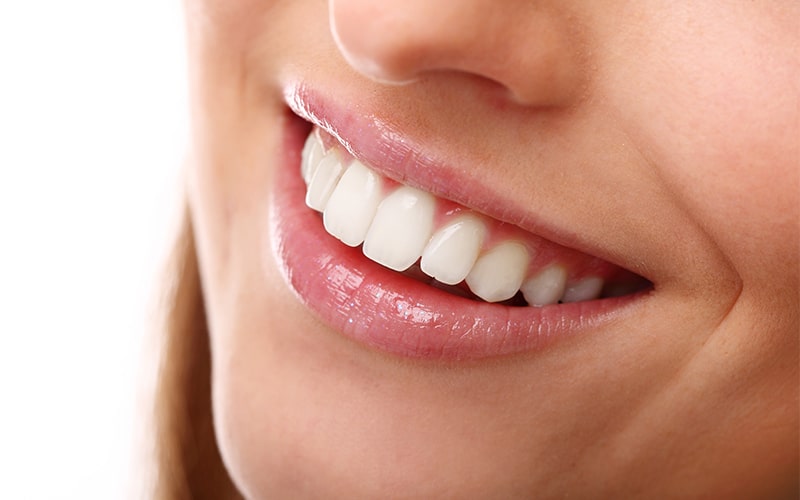- Home
- Departments
- Tooth Whitening

TOOTH WHITENING
Tooth whitening lightens teeth and helps to remove stains and discoloration. Whitening is among the most popular cosmetic dental procedures because it can greatly improve how your teeth look.
Most dentists perform tooth whitening. The outer layer of a tooth is called the enamel. The color of natural teeth is created by the reflection and scattering of light off the enamel, combined with the color of the dentin under it.
Tooth Whitening
Tooth whitening lightens teeth and helps to remove stains and discoloration. Whitening is among the most popular cosmetic dental procedures because it can greatly improve how your teeth look. Most dentists perform tooth whitening.
The outer layer of a tooth is called the enamel. The color of natural teeth is created by the reflection and scattering of light off the enamel, combined with the color of the dentin under it. Your genes affect the thickness and smoothness of the enamel. Thinner enamel allows more of the color of the dentin to show through. Having smoother or rougher enamel also affects the reflection of light and therefore the color.
Every day, a thin coating (pellicle) forms on the enamel and picks up stains. Tooth enamel also contains pores that can hold stains. The most common reasons for teeth to get yellow or stained are:
– Using tobacco
– Drinking dark-colored liquids such as coffee, cola, tea and red wine
– Not taking good care of your teeth
Aging makes teeth less bright as the enamel gets thinner and the dentin becomes darker. It is also possible to have stains inside the tooth. These are called intrinsic stains. For example, intrinsic stains can be caused by exposure to too much fluoride as a child while teeth are developing. Other causes include tetracycline antibiotics. They can stain a child’s teeth if taken by a mother during the second half of pregnancy or by a child who is 8 years old or younger. Teeth are still developing during these years. Trauma may also darken a tooth.
Tooth whitening is most effective on surface (extrinsic) stains.

How it works
Tooth whitening can be done in the dentist’s office or at home. In-office whitening allows your dentist to use a more powerful whitening gel. A specialized light or laser activates the gel and allows bleaching to happen faster.
In-office whitening usually takes 30 to 90 minutes. The number will depend upon the method used, how severe your stains are and how white you want your teeth to be. Different types of stains respond differently to the treatment.
First, your dentist will apply a substance that covers and protects the gums around the teeth. Then, the whitening agent will be placed on the teeth.
Some whitening agents are activated by a laser light, special lights or by the heat from these lights. After the whitening agent is applied, the dentist will shine the light on your teeth. If they are badly discolored, your dentist may suggest that you continue the bleaching process at home for a few days or weeks.
Risks
Whitening is unlikely to cause serious side effects, although some people’s teeth may become more sensitive for a short while. You may get mild gum irritation as well. Women should not have their teeth whitened while pregnant. The effect of the whitening materials on the development of the fetus is not known. Since the procedure is cosmetic, it should be postponed until after delivery.
Sensitivity is another side effect that may occur after tooth whitening. If this occurs you have options to reduce the pain.
Use a sensitivity toothpaste
Sensitive toothpastes are formulated with ingredients such as potassium nitrate to relive the pain associated with tooth sensitivity.
Chew gum
Scientists have found that more saliva is produced when chewing gum. And the act of chewing may distract people from the pain.

Tips to Prevent Tooth Discoloration After TEETH WHITENING
Once you have completed a whitening treatment, there are a few steps you can take to maintain your whiter smile.Once you have completed a whitening treatment, there are a few steps you can take to maintain your whiter smile.
coffee, tea, wine, sports drinks, hard candy, berries and tomato sauce are all foods that can cause tooth discoloration.
Use a straw
when drinking beverages, use a straw to keep stain-causing dyes away from your teeth.
Quit smoking
smoking tobacco can cause teeth to become discolored. Eliminating tobacco can help keep your teeth bright.
If you have any further questions or queries, please feel free to contact us at askourdoctor@deltadentalcare.net
Book Appointment
Please feel welcome to contact our friendly reception staff with any general or medical enquiry call us.
